Examining Intel's Ice Lake Processors: Taking a Bite of the Sunny Cove Microarchitecture
by Dr. Ian Cutress on July 30, 2019 9:30 AM EST- Posted in
- CPUs
- Intel
- 10nm
- Microarchitecture
- Ice Lake
- Project Athena
- Sunny Cove
- Gen11
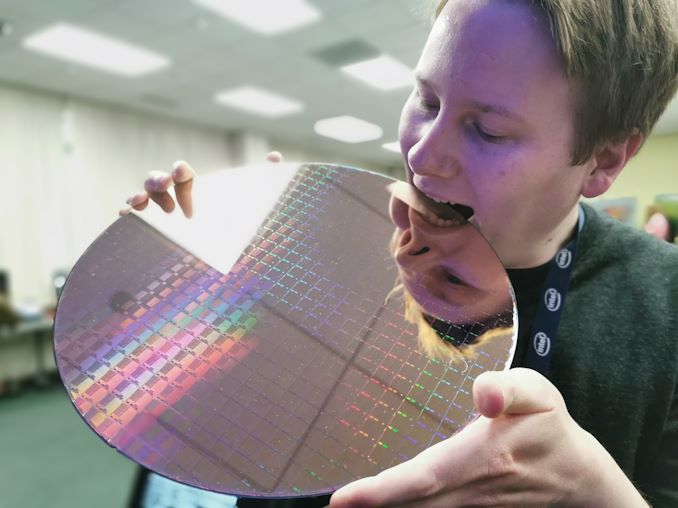
Intel has been building up this year to its eventual release of its first widely available consumer 10nm Core processor, codenamed "Ice Lake". The new SoC has an improved CPU core, a lot more die area dedicated to graphics, and is designed to be found in premium notebooks from major partners by the end of 2019, just in time for Christmas. With the new CPU core, Sunny Cove, Intel is promoting a clock-for-clock 18% performance improvement over the original Skylake design, and its Gen11 graphics is the first 1 teraFLOP single SoC graphics design. Intel spent some time with us to talk about what’s new in Ice Lake, as well as the product's direction.
The Core of Core: 10th Gen Core
Intel’s first batch of 10nm Ice Lake processors are being given the official brand name of ‘Intel 10th Generation Core’, and will feature up to four cores with hyperthreading and up to 64 execution units of Gen11 graphics. The aim of this first round of parts will be the thin-and-light mobile market in the form of the Ice Lake-U and Ice Lake-Y processors. Intel uses these designation for anything from 5W to 28W TDP, which covers all the mobile ultra-premium devices.
The cores inside Ice Lake-U are based on the ‘Sunny Cove’ microarchitecture, and are a further extension of the overall Core microarchitecture design. The new core affords several security benefits towards Spectre and Meltdown, and Intel is promoting a very healthy 18% IPC increase from its Skylake microarchitecture, which was initially launched as a 6th Gen Core part in 2015 (more on this later).
Asides from the core design, and the increased graphics performance, Intel is also putting a lot of effort into the rest of the design of the SoC. This includes AVX-512 extensions to help with deep learning and inference (applying pre-trained neural networks to new situations), integrated Thunderbolt 3 support for up to four full-bandwidth ports, CNVi support for Wi-Fi 6, and a range of platform designs under the umbrella of Intel’s new Project Athena initiative, which Intel hopes to spur on the next generation of premium devices and experiences in this market.
The Processors
Despite Intel continually talking about upcoming devices, and very general top down specifications, we have not seen a full, official CPU list from the company about what frequencies and what performance metrics the new Ice Lake processors will have. At an event a couple of months back, Intel showed this slide:
This slide states that we should expect to see i3, i5, and i7 versions of Ice Lake, with TDPs ranging from 9W to 28W, however the key value in there would be 15W. The processors will be up to four cores (so expect to see some dual cores), with a turbo frequency up to 4.1 GHz. Graphics will be available up to 64 execution units and up to 1.1 GHz, with certain platforms enabling four Thunderbolt 3 ports. Memory gets a healthy boost compared to previous platforms, with support being up to LPDDR4X-3733 (32 GB) or DDR4-3200 (64 GB). Each CPU has 16 PCIe 3.0 lanes for external use, although there are actually 32 in the design but 16 of these are tied up with Thunderbolt support.
Without a specific CPU list, it becomes a little worrying that the company hasn’t actually decided where the binning of these processors is going to fall. It also speaks to the fact that we are still several months away from having these processors in the market, so Intel is trying to find that balance of performance and yield. What we did discover at Computex earlier this year is that some vendors which are planning to have Ice Lake systems available, did disclose some CPU data:
There are of course some unconfirmed specification lists floating around the internet as well.
Ice Lake Design Wins, and Project Athena
At Computex, Intel showed off a number of systems it says will be the leading designs for Ice Lake in Q4. These included a very impressive Dell XPS 13 system, a HP design with a wooden finish, and an Acer Swift model aiming to be the lightest Ice Lake laptop to come to market.
All of these devices come under Intel’s new Project Athena initiative.
Project Athena borrows inspiration from Intel’s previous initiatives, such as Centrino and the Ultrabook. The goal here is to promote an ecosystem of Intel’s partners to design the next wave of devices and form factors that spurs on a good deal of innovation. This means that Project Athena has some very strict design targets that Intel’s partners have to follow and achieve in order to get the Athena designation/certification.
This means a lot of the following:
- Modern Connected Standby
- Biometric Login
- Wake from Sleep in <1 sec
- Core i5 or better
- >8GB DRAM in dual channel
- >256GB NVMe SSD, or Optane
- OpenVINO and WinML support
- 16+ hours of video playback
- 9+ hours of wireless web browsing
- Charge 4+hrs in 30 mins
- Thunderbolt 3, Wi-Fi 6, Gigabit LTE (optional)
- 2-in-1 or Clamshell,
- 12-15.6 inch, minimum resolution 1080p, touch display, narrow bezel on 3 sides
- Backlit keyboard, precision touchpad, pen support
Truth be told, supporting all of these means that the laptop should be a good buy with a decent user experience. These are a great set of goals to have for a mobile device, and it looks set that devices with the Athena designation should be very good.
However something to keep in mind is that in order to enable some of these technologies, it requires the OEMs to invest into Intel’s component ecosystem. Battery life, for example, helps if OEMs use the sub-1W panels that Intel has designated suitable for these devices. To implement Thunderbolt 3 and Wi-Fi 6 in a system is easy if a vendor uses an Ice Lake CPU, which also means that OEMs have to buy Intel’s AX200 chips (or a Killer AX1650, which is an AX200 underneath) to get Wi-Fi 6 to work. For Thunderbolt 3, re-timers are needed to support Type-C, and Intel makes those. The only other way to implement these features requires add-in cards which are higher power, and using those makes hitting the battery life targets, or the form factor requirements, difficult. Ultimately, to get the best of the Project Athena targets, the only way to do so is to buy more components from Intel or Intel approved component suppliers. Some may argue that programs like Project Athena end up cutting competition in this regard.
It should be noted that Ice Lake isn’t a requirement for Athena. But at this point it really, really, helps.
Intel will give the final Athena certification with a verification platform. This certification is built around what Intel says are ‘Key Experience Indicators’, such as the device being ready-to-go at a moment’s notice, providing enough worry-free battery life for common office tasks, and maintaining consistent responsiveness regardless of the state of the system.
Expect to see Athena devices in the market in Q4.
This Article
In this article, we’ll be going over Intel’s disclosures on Ice Lake, its new core Sunny Cove, as well as the new supported features and technologies within. We also comment on each of the new implemented items, with respect to user experience and realistic market/industry responses.


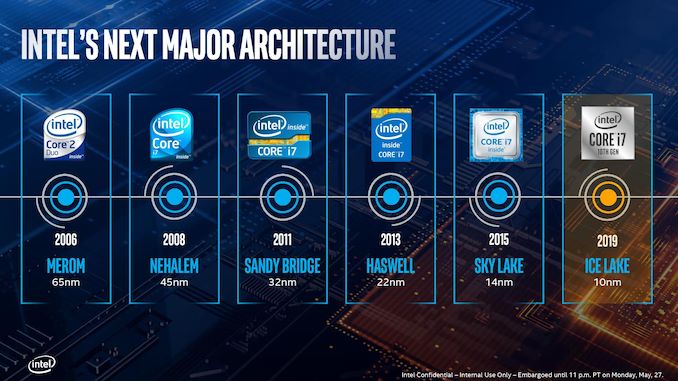
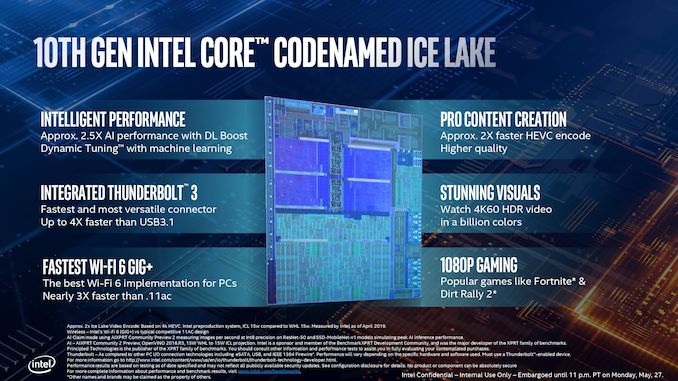
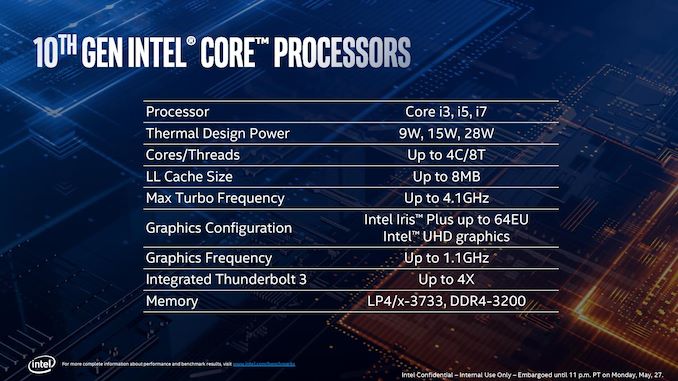
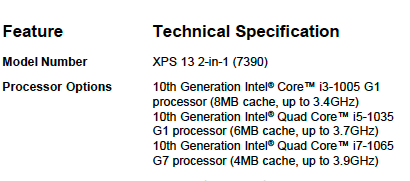
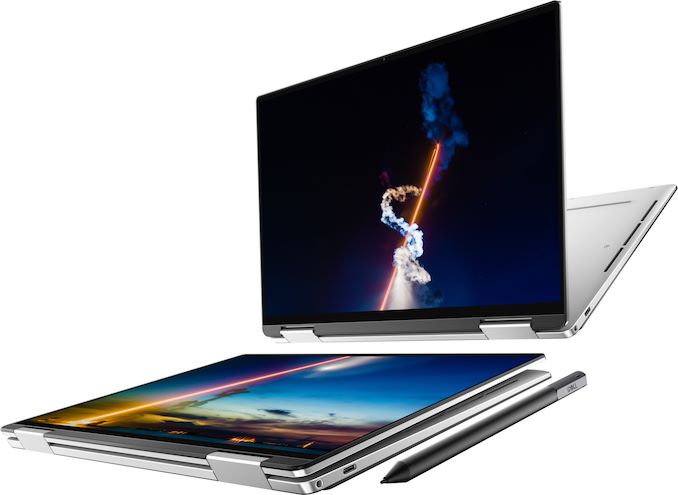
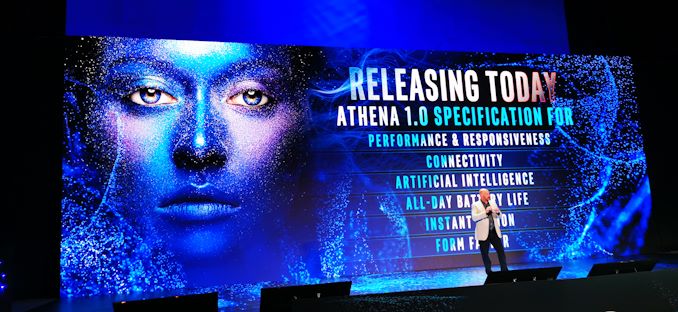
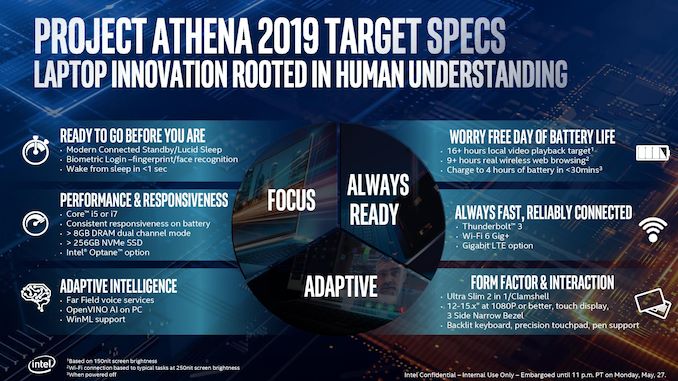
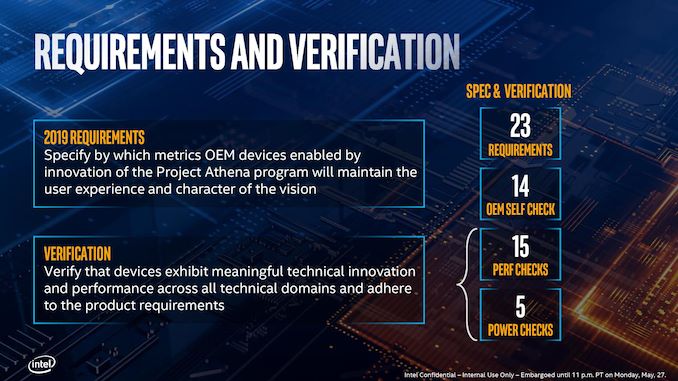








107 Comments
View All Comments
s.yu - Thursday, August 1, 2019 - link
"Charge 4+hrs in 30 mins"...Ok, I think "4+hrs battery life under 30 min. charging" sounds better, or just Intel's version.
29a - Thursday, August 1, 2019 - link
Should Intel go ahead with the naming scheme, it is going to offer a cluster of mixed messages.I believe the word you are looking for there is clusterfuck.
ifThenError - Friday, August 2, 2019 - link
To bad the article doesn't state any further details about the HEVC encoders. Would be interesting to hear if Intel only improved the speed or if they also worked on compression and quality.I bought a Gemini Lake system last year to try the encoding in hardware and have very mixed feelings about Intel's Quick Sync since. The encoding speed is impressive with the last generation already, and all the while CPU and GPU are practically in idle. On the downside the image quality and compression ratio is highly underwhelming and not even near usable for “content creation“ or mere transcoding. It suffices for video calls at best. Even encoding h264 in software reaches far better compression efficiency while being not much slower on a low end CPU.
IIRC Intel promised some “quality mode” for their upcoming encoders, but I can't remember if that was for the gen11 graphics.
intel_gene - Friday, August 2, 2019 - link
There is some information on GNA available. It is accessed through Intel's OpenVINO.https://docs.openvinotoolkit.org/latest/_docs_IE_D...
https://github.com/opencv/dldt/tree/2019/inference...
There is some background information here:
https://sigport.org/sites/default/files/docs/Poste...
urbanman2004 - Friday, August 2, 2019 - link
I wonder what happens to Project Athena if none of the products released by the vendor partners/OEMs meet the criteria that Intel's established.GreenReaper - Saturday, August 3, 2019 - link
Plagues of snakes, owls, eagles, Asari, etc.gambita - Monday, August 5, 2019 - link
nice of you to do intels bidding and promote and help their prhowtomakedeliciousfood - Thursday, August 8, 2019 - link
www.howtomakedeliciousfood.comHikariWS - Sunday, August 11, 2019 - link
These improvements on serial performance are great, it's awesome to have bigger buffers and more execution units. But in clock area it seems to be a big drawback.I'm sure clock issues is the reason we won't have any Ice Lake on desktop, and Comet Lake on laptops on the same generation. But, why no 6C Ice Lake? This opened a but alert sign on me.
But what also called my attention is its IGP power. Most mid range and above laptops ae using nVidia GPU. That's sad for us who want performance and won't play on it, because mid laptops are alrdy all coming with nVidia GPU which makes them more expensive.
Now I hope to have these segments using Intel IGP and not have nVidia GPU anymore. Good to us on having less money wasted on hardware we don't need, bad for nVidia.
nils_ - Wednesday, August 14, 2019 - link
Can you please stop eating the chips? Yield must be bad enough as it is!